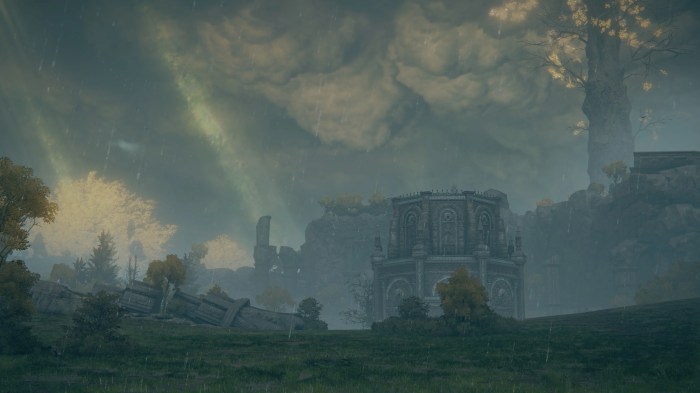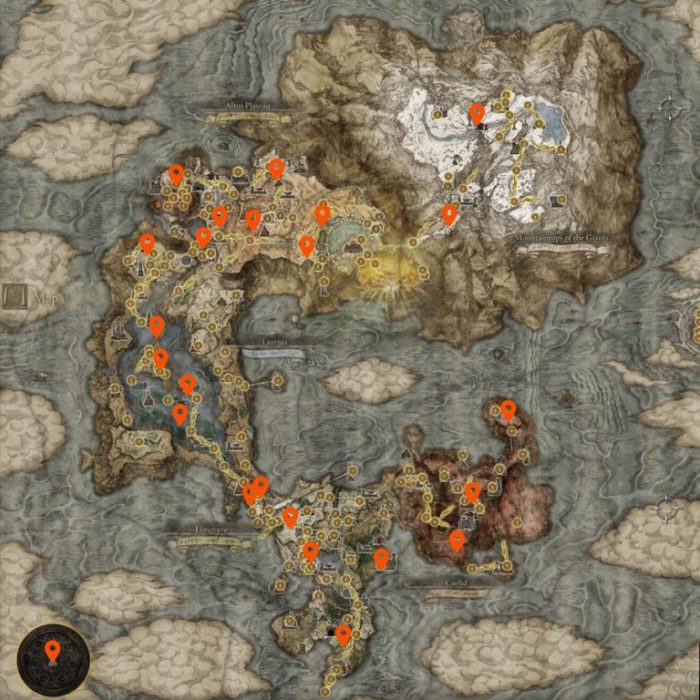Elden ring areas in order – Embark on an extraordinary journey through the vast and enigmatic world of Elden Ring, where each area unfolds a unique tapestry of challenges, lore, and breathtaking landscapes. From the serene meadows of Limgrave to the treacherous heights of the Mountaintops of the Giants, our guide will meticulously lead you through the Lands Between in chronological order, unraveling the secrets and wonders that await.
Elden Ring Areas in Order
Elden Ring, an open-world action RPG developed by FromSoftware, presents players with a vast and intricate world to explore. From the serene landscapes of Limgrave to the desolate wastes of Caelid, each area offers unique challenges, enemies, and lore.
This article analyzes the different areas in Elden Ring in the order they are typically encountered, providing insights into their geographical features, key landmarks, and significance within the game’s narrative.
Limgrave

Limgrave is the starting area of Elden Ring, a sprawling region characterized by rolling hills, lush forests, and ancient ruins. It serves as a tutorial zone, introducing players to the game’s mechanics and combat system.
- Key landmarks: Stormveil Castle, Stormfoot Catacombs, Agheel Lake
- Enemies: Soldiers, wolves, giant rats
- NPCs: Varre, White Mask, Sorcerer Rogier
Liurnia of the Lakes

Liurnia is a vast and ethereal region located north of Limgrave. It is dominated by shimmering lakes, towering cliffs, and the grand Academy of Raya Lucaria.
- Key landmarks: Academy of Raya Lucaria, Carian Manor, Red Wolf of Radagon
- Enemies: Sorcerers, mages, demi-humans
- NPCs: Ranni the Witch, Blaidd, Thops
Caelid
Caelid is a desolate and dangerous region located east of Limgrave. It is ravaged by the Scarlet Rot, a deadly plague that infects both the land and its inhabitants.
- Key landmarks: Redmane Castle, Fort Gael, Dragonbarrow
- Enemies: Dogs, wolves, dragons
- NPCs: Alexander the Iron Fist, Millicent
Altus Plateau
Altus Plateau is a mountainous region located north of Caelid. It serves as a midpoint in the game, offering a mix of open fields, towering peaks, and ancient ruins.
- Key landmarks: Leyndell, Royal Capital, Erdtree
- Enemies: Knights, giants, dragons
- NPCs: Gideon Ofnir, Godfrey
Mountaintops of the Giants
Mountaintops of the Giants is a treacherous and unforgiving region located north of Altus Plateau. It is characterized by towering peaks, freezing temperatures, and powerful enemies.
- Key landmarks: Forge of the Giants, Fire Giant
- Enemies: Giants, frost spirits, dragons
- NPCs: None
Crumbling Farum Azula, Elden ring areas in order
Crumbling Farum Azula is the final area of Elden Ring. It is a crumbling and desolate realm located high above the clouds, accessible only after defeating the Fire Giant.
- Key landmarks: Elden Throne, Maliketh, the Black Blade
- Enemies: Angels, dragons, beasts
- NPCs: None
Optional Areas

In addition to the main areas, Elden Ring features a variety of optional areas that offer unique challenges and rewards.
- Weeping Peninsula: A small peninsula located south of Limgrave, known for its challenging boss fights and hidden treasures.
- Siofra River: A vast underground river located beneath Limgrave, home to ancient ruins and powerful enemies.
- Nokron, Eternal City: A subterranean city located beneath Liurnia, filled with deadly traps and formidable foes.
Query Resolution
What is the first area in Elden Ring?
Limgrave is the starting area of Elden Ring, where players begin their journey into the Lands Between.
How many main areas are there in Elden Ring?
There are 7 main areas in Elden Ring: Limgrave, Liurnia of the Lakes, Caelid, Altus Plateau, Mountaintops of the Giants, Crumbling Farum Azula, and Leyndell, Royal Capital.
What is the final area in Elden Ring?
Crumbling Farum Azula is the final area in Elden Ring, where players face the ultimate challenge and confront the Elden Beast.
